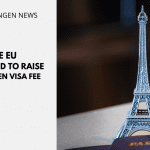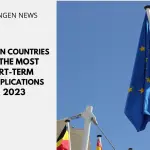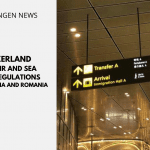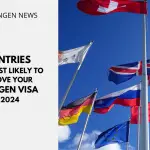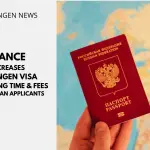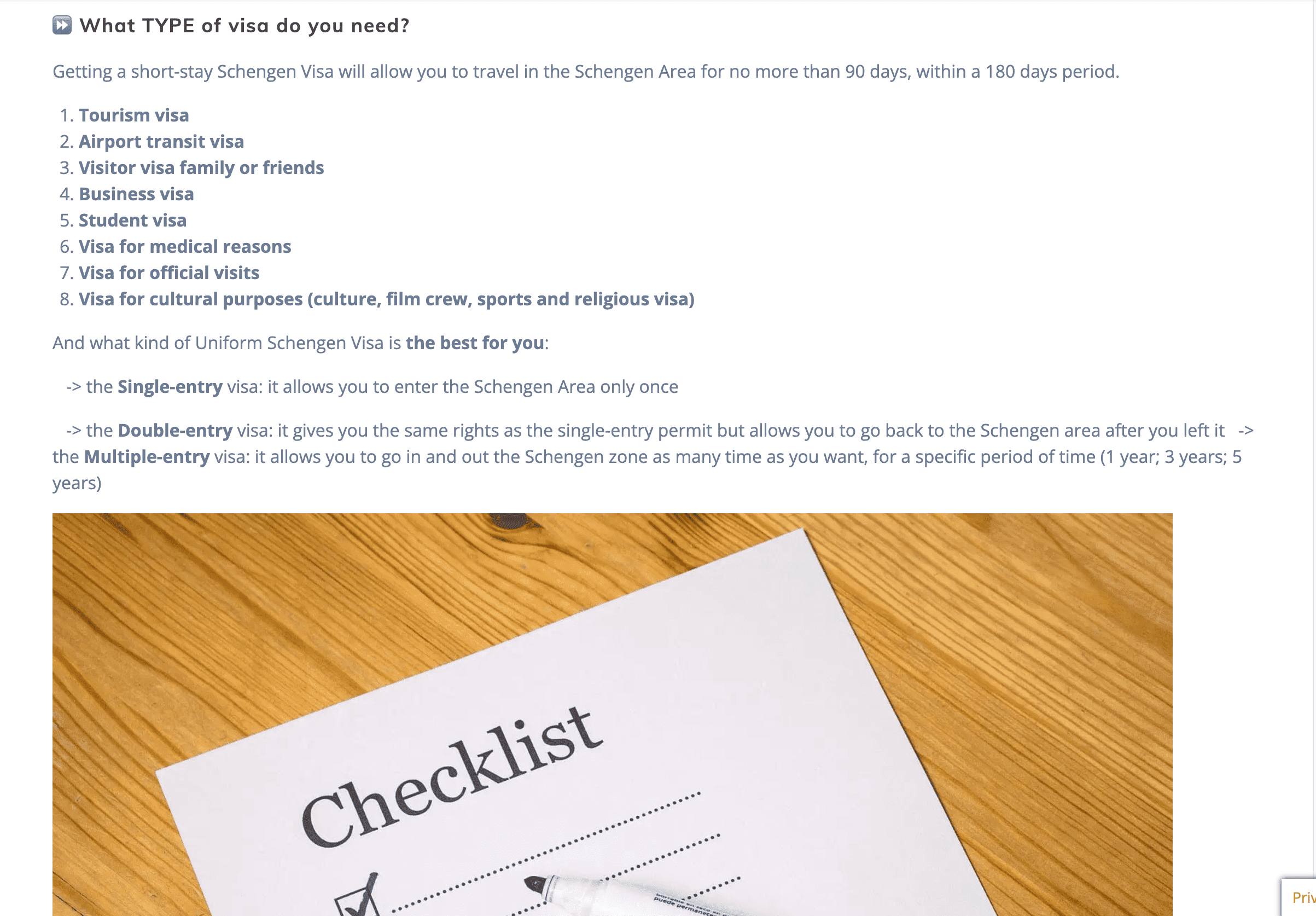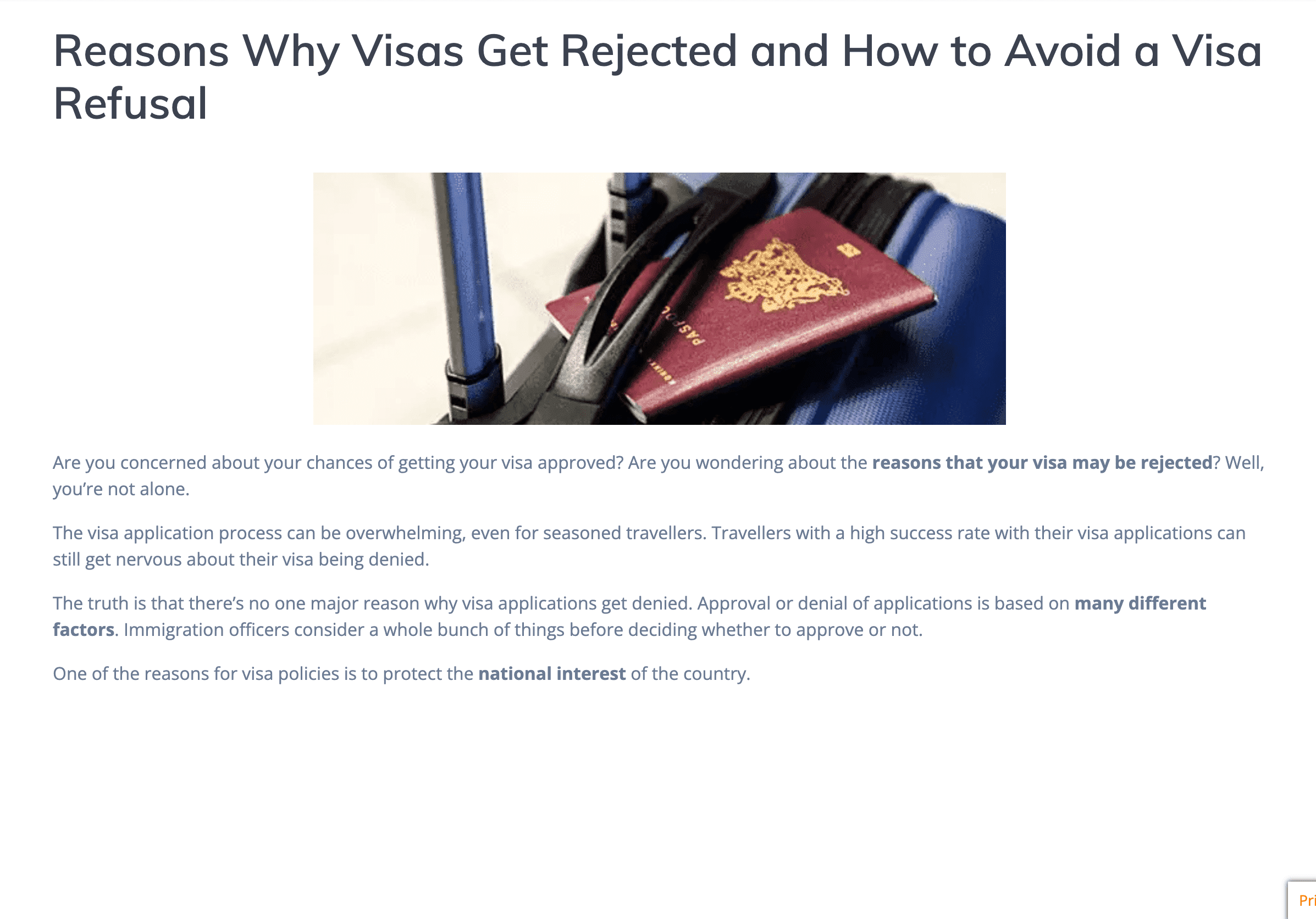Schengen Countries: Where in Europe Can You Travel on a Schengen Visa
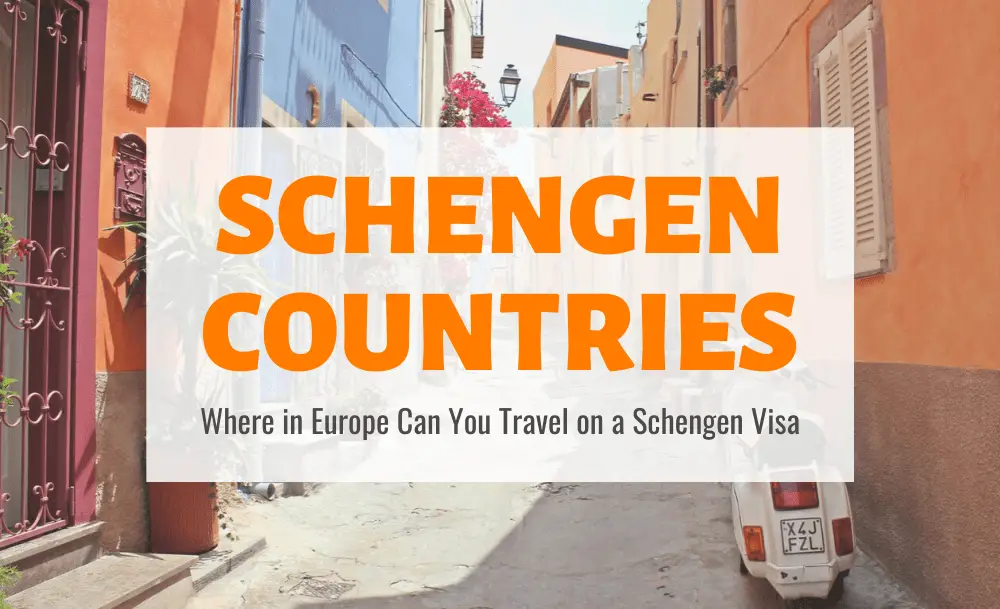

The Schengen Countries, also known as the Schengen States or Schengen Members, are European countries that you can visit on a Schengen Visa. They are primarily located in the European Area (or EU countries).
The uniform visa that allows you to travel to each of these countries is based on an agreement, internationally known as the Schengen Agreement. That uniform visa is a Schengen Visa, which permits you to travel freely to each and all of the Schengen countries within the validity of your Schengen visa.
The Schengen Area is a zone where 26 European countries, removed their internal borders, for unrestricted and free movement of people, in exchange for common rules for external borders controls and crime-fighting & enforcement by strengthening the common judicial system and police cooperation.
Schengen Area covers most of the EU countries, except Ireland, Bulgaria, Cyprus and Romania. Although not members of the EU, countries like Norway, Iceland, Switzerland and Lichtenstein (members of the EEA and EFTA) are also part of the Schengen zone. Bulgaria, Cyprus and Romania are going through the process of joining the Schengen Area following setbacks.
In December 2022, the EU voted to decide whether Croatia, Bulgaria, and Romania could join the Schengen Zone. Croatia got the green light from all 26 Schengen countries and is now part of Europe's passport-free travel area.
Unfortunately, Austria wasn't keen on letting Bulgaria and Romania join the Schengen area. The Netherlands voted yes to Romania but no to Bulgaria.
Birth of the Schengen Area
The discussion about being able to travel freely around Europe began with the concept of free movement within Europe since the creation of the European Community (EC) in the late 1950s. The European countries discussed achieving integration and overcoming the hurdles of free movement of goods, services, capital and workers within Europe.
It was a slow discussion but then the Benelux countries (Belgium, Netherlands and Luxembourg) established a common passport area in the year 1970. This was a great success and the three countries saw an increase in prosperity in their respective countries.
Later protests of truck drivers demanding open borders, due to border-crossing delays between France and Germany, and seeing the economic benefits of open borders were a further catalyst for free movement. These three countries did not have strong economies but when they opened their borders, and in 1984 Germany and France signed a bilateral agreement to remove controls along their common boundary.
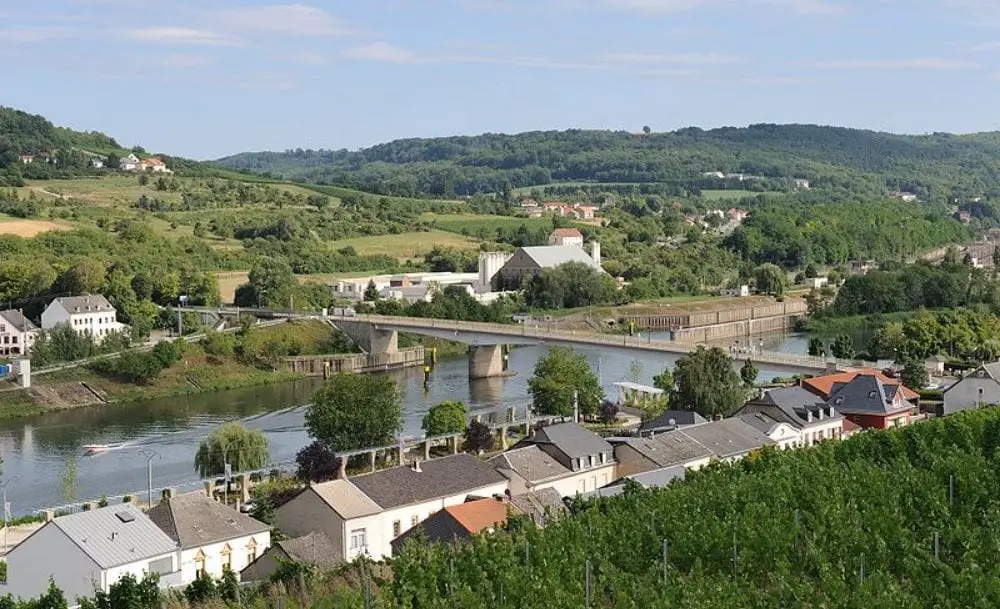

Licensed under the Creative Commons Attribution-Share Alike 3.0 Unported license
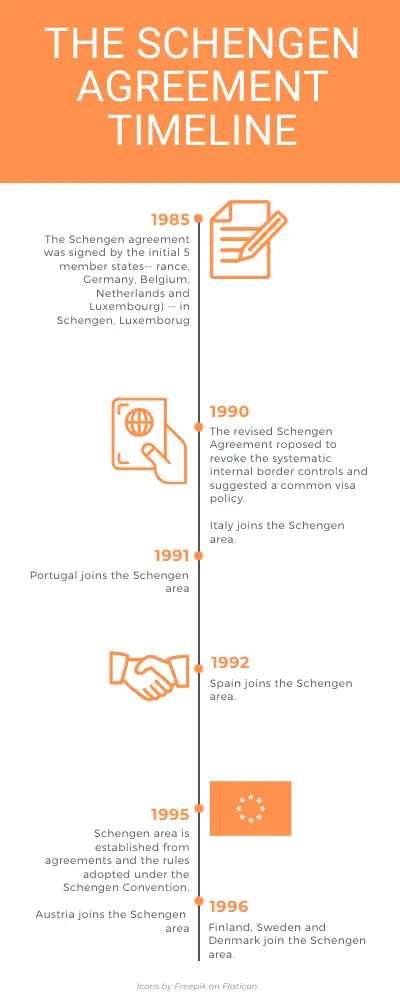

Schengen Agreement
The Schengen agreement was signed by the initial 5 member states (France, Germany, Belgium, Netherlands and Luxembourg) in June 1985. This treaty was signed in a small town in Luxembourg named Schengen thereby giving rise to the Schengen Agreement.
The purpose of the Schengen Treaty was to abolish borders and to provide for the free movement of member states’ citizens within the five-member Zone. However, the implementation of the Schengen Treaty was not put into place until a later date. The Schengen area was a test of open borders within these countries. It was a common passport area that will prove to be successful before later expanding to other European countries.
In 1990, the Schengen Agreement was further added to by the Schengen Convention. The agreement proposed to revoke the systematic internal border controls and it suggested a common visa policy. The Schengen area would operate as one state under this law, it meant that travel would be easier and faster within Schengen member states with people able to move without border checks within the region.
After a while more European countries signed the Schengen agreement, beginning with Italy in 1990, Portugal and Spain in 1991, Greece in 1992, then on 19 December 1996, three more countries, Denmark, Finland, Iceland, Norway and Sweden joined the Schengen Area and Austria on 27th May 1997.
On 16 April 2003, the Czech Republic, Estonia, Hungary, Latvia, Lithuania, Malta, Poland, Slovakia, Slovakia joined the Schengen area and opened their borders on 21 December 2007. This was followed by Switzerland which joined in October 2004, with Liechtenstein being the final country to join the Schengen Area In February 2008.
The agreements and the rules adopted under the Schengen Convention led to the establishment of the Schengen Area in 1995. There are 26 countries, combined to be what is known as the Schengen area including four non-EU countries (Norway, Switzerland, Iceland and Liechtenstein).
The Schengen Area Countries
In 2018, 713 million tourists travelled to Europe. This represents around 50% of worldwide travel and tourism.
Let us find out about those 26 states where citizens of those states move freely within the territory. The states that are included in the Schengen Area, in alphabetical order, are
| Austria | Germany | Lithuania | Slovakia |
| Belgium | Greece | Luxembourg | Slovenia |
| Czech Republic | Hungary | Malta | Spain |
| Denmark | Iceland | Netherlands | Sweden |
| Estonia | Italy | Norway | Switzerland |
| Finland | Latvia | Poland | |
| France | Liechtenstein | Portugal |
Austria 🇦🇹
Capital: Vienna
Climate: Mostly temperate, frequent rainfall throughout the year, winters see some snow. Moderate summers. With a population: 8,822,267 (January 2018), the languages in Austria are 86% speak German. Other languages are Turkish (2.3%) and Serbian (2.2%). Also, Croatian and other languages are found here. Austria signed the Schengen agreement on 28 April 1995 and implemented the provisions on 1st December 1997.
Austria has long been a cradle of the old imperial glory and natural serenity juxtaposed against one of the most technologically advanced economies. It is a popular international destination, ranking 11th in terms of international tourist arrivals. Panoramic vineyards against the backdrop of the magnificent Alpine mountains are sure to inspire a sense of wanderlust in anyone who visits its shores.
Connoisseurs of art and music will also feel right at home in Austria. This country has produced countless art and culture doyens over the centuries, the most notable being Mozart and Schubert. And who can forget Maria dancing across the scenic valleys of the Alps in the Sound of Music?
One can be forgiven to think that they have slipped through time while roaming around the many quaint towns which have stood for centuries. Magnificent castles and forts are splattered all across the landscape of Austria, each with many fascinating tales to tell to those willing to listen.
In 2019, there were 323,262 applications for Schengen visas to Austria. This dropped to 45,014 applications in 2020 during the pandemic.
Check out the Austria Visa requirements and apply for Visa to Austria.
Belgium 🇧🇪
Capital: Brussels
The languages spoken in Belgium is mostly Dutch, French and German
Rich chocolates, Bruges canals, invigorating murals splattered on the walls, medieval town cores, Trappist beer and Tintin… how can anyone say no to Belgium?
More than anything, Belgium and its capital city of Brussels are known for producing some of the most recognisable comic book characters this world has seen. You can almost hear Captain Haddock yelling ‘Billions of blue, blistering barnacles’ as you roam around the alleys of Brussels with towering murals spread across the 19 districts of the city.
When you have had your fill of comic books and art, you may find solace in the picturesque café-bars of the countryside, known to serve some of the finest beers in the world. Belgian chocolates, which are arguably as famous as Belgian comics, are another treat to vie for when you visit this small, pleasant country.
As one of the original 5 signatories to the Schengen Agreement. Belgium signed the agreement on 14 June 1985 and began implementing its provisions on 26 March 1995.
In 2019, there were 248,021 Schengen visa applications to Belgium. This dropped to 50,058 applications in the whole of 2020 when the coronavirus pandemic hit.
Check out the Belgium Visa Requirements and how to apply for a visa to Belgium.
Croatia 🇭🇷
Capital: Zagreb
The official language of the Republic of Croatia is Croatian with roughly 4 million inhabitants.
Croatia has famous beautiful coastlines bordering the Adriatic Sea and over 1,000 islands and islets. The weather is a mild Mediterranean climate with crystal-clear waters attracting tourists that enjoy swimming, snorkelling, and diving. For a country with a coastline of almost 4300km, other activities include sailing, hiking, and exploring picturesque towns and villages along the coast.
Dubrovnik, a historic city known as the “Pearl of the Adriatic,” is a popular destination. Other sights are the stunning Plitvice Lakes National Park and the ancient Roman amphitheatre in Pula. For the foodies among you, Croatia is known for its culinary delights, including seafood, truffles, and wine.
Croatia became the 27th member of the Schengen Area on 1st January 2023 and has also adopted the Euro currency. This inclusion makes the Schengen Area now the world's biggest visa-free area. Now border controls and passport checks are abolished between Croatia and the other 26 Schengen countries
Check out the Croatia Visa Requirements and how to apply for a visa to Croatia.
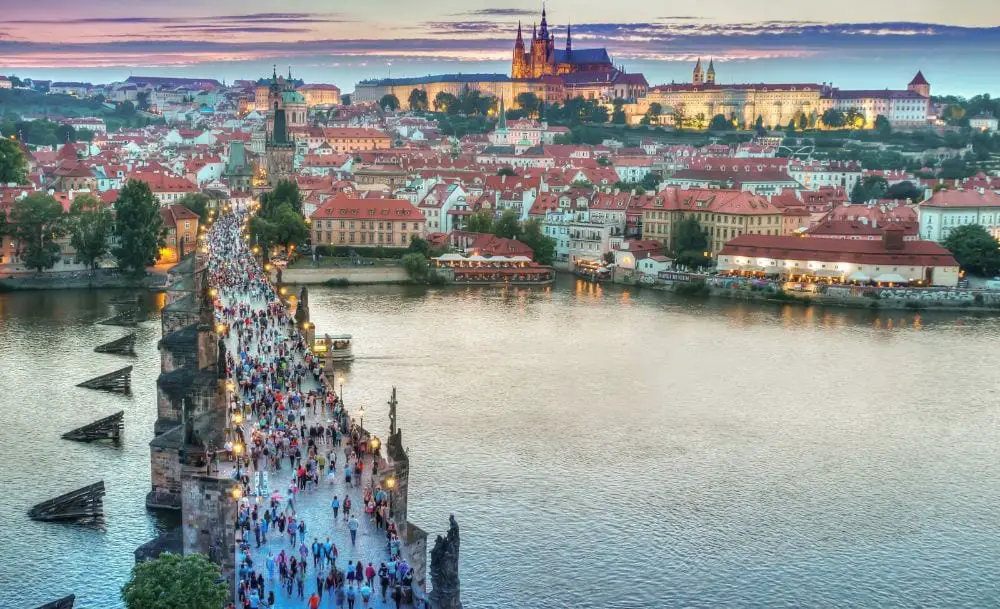

Czech Republic 🇨🇿
Capital: Prague
The languages spoken in the Czech Republic is Predominantly Czech, besides Slovak
An erstwhile protectorate of the Soviet Union, the Czech Republic is a country with an opulent tradition dating back centuries. The idyllic landscape of this country, combined with its rich heritage, attracts over 10 million international tourists to the Czech Republic every year.
Prague is the natural commencement point for a vast majority of the tourists, offering unwary travellers some of the most unforgettable sights they are ever likely to encounter. The Gothic architecture of the city has stood tall for over five centuries and continues to bedazzle travellers from all over the world.
The Czech Republic signed the Schengen agreement on 16 April 2003 and implemented its provisions on 21 December 2007.
The Czech Republic was in the top 8 travel destinations of the Schengen countries for travellers that needed a Schengen visa in 2019. There were 739,818 Czech visa applications in 2019 with that figure dropping to 177,197 during the pandemic.
Check out the Czech Republic Visa Requirements and how to apply for a visa to the Czech Republic.
Denmark 🇩🇰
Capital: Copenhagen
Languages spoken in Denmark are Danish, Faroese, Greenlandic and German, although English is the most predominant second language.
One of the perpetual toppers of the World Happiness Index list, Denmark is one country that can aptly be described as the land of ‘fairy tales'. It is nestled comfortably between the Baltic Sea in the East and the North Sea in the west, making it the only European country to be bordered by seas on both sides.
Denmark joined the Schengen zone when it signed the Schengen agreement on 19 December 1996 and implemented its provisions on 25 March 2001.
Demnark had 165,191 Schengen visa applications in 2019. This fell to 31,438 for the whole of 2020 as the pandemic shut down international travel.
Check out the Denmark Visa Requirements and how to apply for a Schengen visa to Denmark.
Estonia 🇪🇪
Capital: Tallinn
The languages spoken in Estonia are Estonian, Russian, Ukrainian and English.
As a former vassal of the Soviet Union, Estonia is remarkably unique in its topography, history and culture. After its break up with the Russian Federation, an association of 300 years, Estonia has been welcomed into the European fold with open arms.
Estonia’s capital city of Tallinn, and its UNESCO heritage site protected Old Town is one of the more remarkable settings in Europe, filled with colours, neo-Gothic architecture and hot air balloon rides. The Estonian countryside, one of the most sparsely populated countrysides in Europe, gives weary travellers a respite from the humdrum of busy European towns and cities.
Estonia signed the Schengen agreement to join the Schengen zone on 16 April 2003 and implemented its provisions on 21 December 2007.
Estonia was the runner up of the easiest places to get a Schengen visa. It had 145,711 visa applications in 2019. This fell to 25,554 during the pandemic in 2020.
Check out the Estonia Visa Requirements and how to apply for a Schengen visa to Estonia.
Finland 🇫🇮
Capital: Helsinki
Languages spoken in Finland include 89% speak Finnish, Swedish 5.3%, Russian and others.
There is a reason that Finland tops the World Happiness Index list year after year, and you have to visit this wildly beautiful country to understand it. A perfect mix of natural extravagance, culinary excellence and old-fashioned hospitality, Finland should be on the itinerary of every traveller who visits Europe.
Suomi, as the Finns like to call their country, is the most popular destination in Europe for hiking, canoeing and kayaking. The entrancing blue lakes on the backdrop of snow-clad mountain peaks and lush-green forests seem something right out of a painter’s masterpiece.
Finland signed the Schengen agreement on 19 December 1996 and implemented it on 25 March 2001. The summer, a time of revelling for the local Finnish population, is the best time to visit this country. You can spend your time roving through the brightly coloured streets, attending art and music festivals, or simply relax in one of the waterside cottages enjoying a home-brewed beer.
Finland had 895,775 Schengen visa applications submitted in 2019. This dropped to 137,536 in 2020 as pandemic caused travel restrictions that affected visa processing.
Check out the Finland Visa Requirements and how to apply for a Schengen visa to Finland.
France 🇫🇷
Capital: Paris
The languages spoken in France is almost the entire country speaks French with declining local dialects and other languages like Corsican, Catalan, Alsatian and Flemish.
Cultural overview: What more can anyone say about France that hasn’t already been said a thousand times over? The home of fashion, art and architecture, France is unwavering in its ability to lull travellers. France attracts over 85 million tourists every year, the highest in the world by a significant margin.
French art, architecture, and culture are in a league of their own. Paris, considered the romantic capital of the world, is a world in itself. The more popular destinations- Eiffel Tower, French Riviera and the royal Versailles- are well-documented and a must in the itinerary of any traveller. The relatively less tread, but equally grandiose la France profonde or the French countryside, will engulf you in a sense of lull that is hard to shake off.
France is the most popular destination for travellers that need to apply for a Schengen visa. In 2019, France had 3,980,989 applications for a Schengen visa to France. In 2020, this fell to 658,247 with the coronavirus pandemic causing travel restrictions.
Check out the France Visa Requirements and how to apply for a Schengen visa to France.
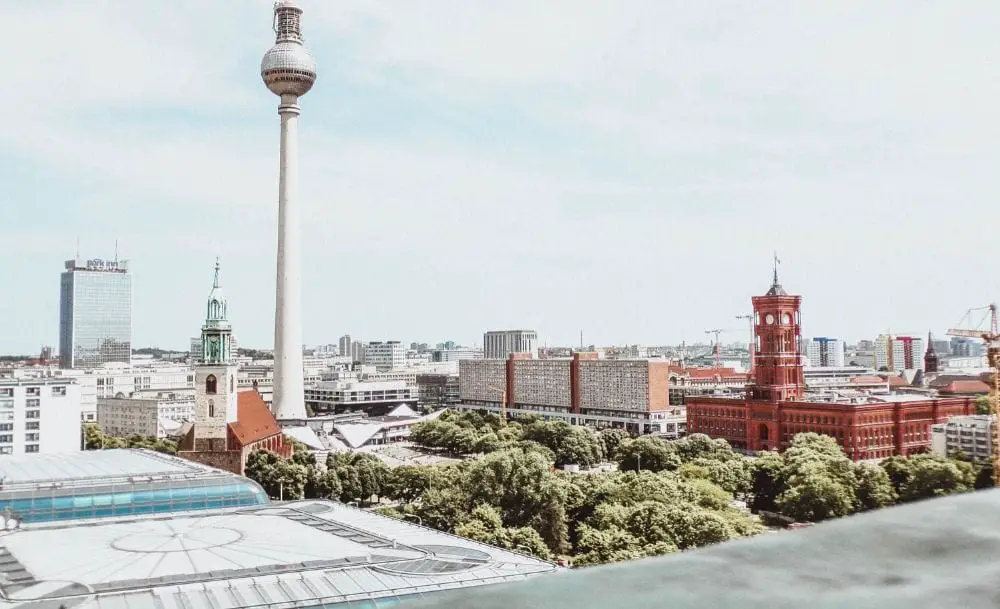

Germany 🇩🇪
Capital: Berlin
German is the primary language of Germany. Other major languages are Flemish, French and English.
More than anything, Germany exudes a sense of symmetry and steadfastness in everything that it stands for. To understand the German landscape and its culture, one must let go of all their inhibitions and let the German spirit transfuse their being.
One of the first industrialised countries in Europe, and indeed the entire world, Germany is where modernity meets antiquity. When you are saturated with the great cities of Germany- Berlin, Hamburg and Munich among others- and it takes time to be so, you can head over to the bewitching coasts in the North, or soak the grandeur of the mighty Alps, while meandering your way through the vast expanse of the seemingly never-ending vineyards and valleys.
As a founding member of the Schengen zone, Germany signed the Schengen Agreement on 14 June 1985 and started its implementation on 26 March 1995.
With Germany being the second most popular destination for those who need a Schengen visa, 2,171,309 applications were made in 2019. Of course, with the global pandemic, this fell to 411,826 in 2020.
Check out the Germany Visa Requirements and how to apply for a Schengen visa to Germany.
Greece 🇬🇷
Capital: Athens.
The most spoken language in Greece is Greek, which 99% of the population speak; however, many people also speak Spanish and English as well as German.
Greece takes you back to the times of Agamemnon and Achilles, of gladiators and royal courtyards. Today, Greece might be a country in political and financial turmoil, but it has served as a beacon of human excellence and creativity since time immemorial.
The birthplace of democracy and liberty, Greece has an abundance of relics that predate written history. You are sure to be stupefied by the sheer weight of history as you step into the grand ruins of Olympia, the very place where the first Olympians competed with each other sometime in the 8th century.
From the amphitheatres of Delphi to yachting in the Ionian seas, Greece has no dearth of attractions for outdoor enthusiasts. Don’t be afraid of exploring alone for you won’t be so for long, as socialising is a way of life for the Greeks. So, don’t be surprised if you find yourself invited for a shot of ouzo by locals.
Greece signed the Schengen agreement on 6 November 1992 and began implementing the provisions from 1 January 2000. It has some of the most stringent applications of the Schengen visa rules.
With Greece heavily dependent on tourism, it received 880,892 applications for Schengen visas in 2019. This of course dropped during the pandemic to 111,870 applications. This caused the Greek government to seek an EU bailout for damage to its economy whilst the pandemic caused travel restrictions imposed by the European Union.
Check out the Greece Visa Requirements and how to apply for a Schengen visa to Greece.
Hungary 🇭🇺
Capital: Budapest
The vast majority of languages in Hungary is Hungarian (90%). Other languages in Hungary include English, French, Russian, German and Romanian.
Hungary is one of the oldest nation-states in Europe dating back to 895 AD. Home to the highest number of thermal springs in the world. It was another iron-curtain country, the first to open its gates to Western Europe.
Once you have feasted your eyes on the grand buildings and the understated landscape of the Hungarian countryside, it’s time to feast on the gastronomically enriching delights that this country has to offer. Hungarian wines are also renowned across the world, from the classic reds of Villàny and Eger to the Badacsony whites.
Hungary signed the Schengen agreement on 16 April 2003 and started implementing its provision on 21 December 2007.
Hungary had 237,851 Schengen visa applications submitted in 2019. This dropped to 45,198 in 2020 taking into account the global coronavirus pandemic.
Check out the Hungary Visa Requirements and how to apply for a Schengen visa to Hungary.


Iceland 🇮🇸
Capital: Reykjavik
The languages spoken in Iceland are Icelandic, German, and other Nordic languages
A symphony of stunning landscapes, unpredictable ice-covered volcanoes, ink-blue seas and top-of-the-world Icelandic hospitality, this small, under-populated island tops the bucket list of both the adventure lover and the serene solo traveller.
Nature is at the heart of the Icelandic travelogue, but it is not the only attraction that this country has to offer; not by a long shot. Icelanders are big on culture and literature and produce more literature per capita than any other country. Locals believe that it’s the influence of nature that turns most people here into poets and dreamers.
Well, when you witness the aurora borealis (northern lights) from your camp or trek across one of Iceland’s many snow-covered peaks, it’s hard not to let it change you fundamentally as a person, and in a good way.
Iceland is the third easiest country to obtain a Schengen visa. In 2019, 18,183 visa applications to Iceland were submitted. in 2020, this dropped to 2,552 Schengen visa applications being submitted during the pandemic. Iceland was one of the countries that fared better than its European counterparts during the pandemic as it had a stronger lockdown and stricter entry requirements when the pandemic first hit.
Check out the Iceland Visa Requirements and how to apply for a Schengen visa to Iceland.
Italy 🇮🇹
Capital: Rome
The languages spoken in Italy is Predominantly Italian. German is also spoken in parts like Trentino-Alto Adige in the north. English, French and Slovene are also spoken.
There may not be any hard statistics to back this up, but even a layman knows that Italy has had more influence on shaping the art and culture of the modern world than any other country. The birthplace of the European Renaissance, there is no street or corner in Italy where you cannot smell grandeur. From Michelangelo’s dome of St. Peter’s Basilica to Da Vinci’s Mona Lisa, Italy never fails to amaze.
A love for beauty, symmetry and panache follows you wherever you go in Italy; here, art is a part of life, not a separate entity. But that doesn’t mean that Italy has nothing for nature lovers. It’s almost as if the Italian landscape was painted by one of its own maestros. From the icy Alps bordering the north to the breathtaking coasts of Amalfi, Italy has something to offer for everyone.
Italy signed the Schengen agreement on 27 November 1990 and began the process of implementation on 26 October 1997. Italy is one of the three most popular countries to visit in the Schengen zone.
As expected, Italy is one of the top three destinations for Schengen visa applicants worldwide with 2,053,521 visa applications to Italy in 2019. The drop in applicants for 2020, during the pandemic, resulted in 293,553 applications being made as the country was in an EU wide travel restrictions.
Check out the Italy Visa Requirements and how to apply for a Schengen visa to Italy.
Latvia 🇱🇻
Capital: Riga
Languages in Latvia are Latvian (61%), Russian and Belarussian (10%)
Latvia is a melting pot of numerous cultures thanks to the centuries of invasions that it has faced from almost every power in the region. Today, Latvia stands as a shining example of how conquests can shape the demography of a country, and not bog it down.
Despite its small, heterogeneous population, Latvia welcomes everyone to its fold with open arms. Its vast expanse of picturesque countryside enchants those who seek the solitude of nature. If you want to get away from the cacophony of life, Latvia is the place to be.
Culturally, Latvia prides itself as the most artistic race of the Baltic region. Its capital city of Riga holds a wild repertoire of carnivals and colourful festivals celebrating the amalgamation of different cultures.
Latvia signed the Schengen agreement on 16 April 2003 and started implementing its provisions on 21 December 2007.
In 2019, Latvia had 167,743 Schengen visa applications. But this dropped to 30,134 visa applications as the pandemic caused countries to impose travel restrictions.
Check out the Latvia Visa Requirements and how to apply for a Schengen visa to Latvia.
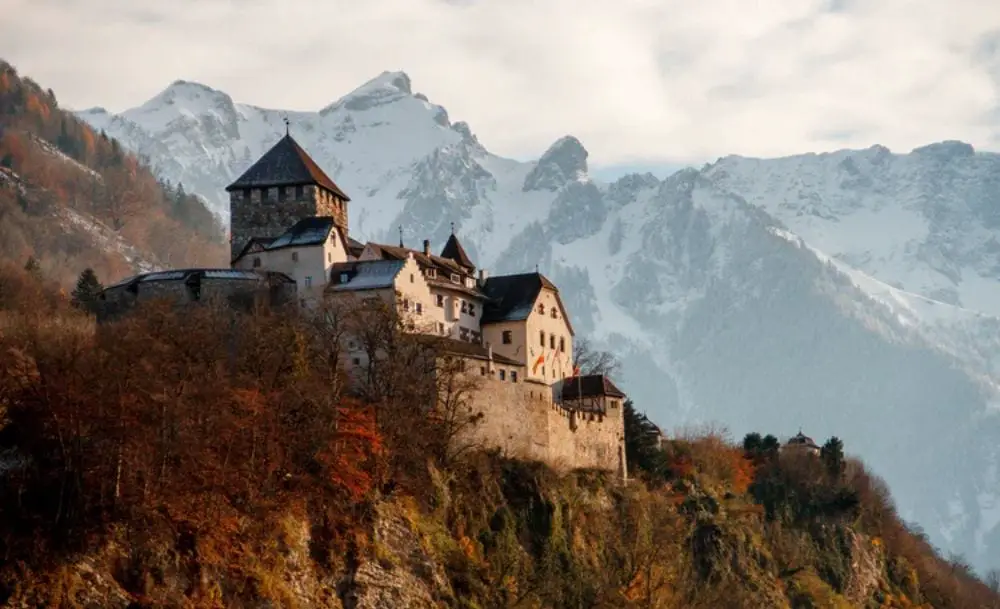

Liechtenstein 🇱🇮
Capital: Vaduz
The languages in Liechtenstein break down to 94% speaking German of which the main dialect is Alemannic. Other languages include Italian and English.
One of the smallest and least populated countries in the world, Liechtenstein definitely punches well above its weight. This 62 square miles wide country is one of the richest in the world on a per capita basis and a delight for anyone who loves nature.
Nestled in the laps of the Alps, Liechtenstein’s holds the distinct record of the least number of crimes in Europe, with the last murder taking place in 1997. It’s unlike any other country in the world; you could quite literally rent the entire country for $70,000 a night as part of a scheme that was launched in 2011.
Liechtenstein signed the Schengen Agreement on 28 February 2008 and started the implementation process on 19 December 2011 after a number of objections from other Schengen countries. Liechtenstein is the last member state to join the Schengen zone.
Check out the Liechtenstein Visa Requirements and how to apply for a Schengen visa to Liechtenstein.
Lithuania 🇱🇹
Capital: Vilnius
The languages spoken in Lithuania are Lithuanian (92%), Russian and English
Being the southernmost point in the Baltic region, Lithuania is the warmer, greener cousin in the family. Its seemingly endless midsummer days, the warm Baltic sea breeze, pristine white beaches and amber woodlands are sure to mesmerise you beyond comprehension.
Like other Baltic countries, Lithuania offers an eclectic mixture of the Soviet and western cultures, overlapping but never trying to outclass each other. You will find majestic neoclassical churches right across the street from imposing baroque fineries.
Lithuania signed the Schengen agreement on 16 April 2003 and started implementing the provisions of the Schengen agreement on 21 December 2007. Lithuania also comes out as one of the easiest countries to get a Schengen visa.
Lithuania was listed as the easiest country to obtain a Schengen visa from, based on its refusal rates. For the year 2019, there were 359,484 Schengen visa applications to Lithuania. This fell to 66,800 in 2020 when covid hit.
Check out the Lithuania Visa Requirements and how to apply for a Schengen visa to Lithuania.
Luxembourg 🇱🇺
Capital: Luxembourg (one of the three official capitals of the European Union)
The official, administrative and judicial language is Luxembourgish. Around 88% speak it. The other languages are French, English, Belgian, German and others.
Luxembourg is another small country in northern Europe. Don’t let its diminutive size fool you though; Luxembourg is a treasure trove of overarching cultures against the backdrop of invigorating valleys and medieval castles.
Luxembourg consistently features at the top of two lists- per capita income and per capita wine consumption. So, be ready to drown your senses in the barrel if you happen to visit this enchanting slice of Europe. Its capital, Luxembourg City, is a UNESCO protected site for its many medieval structures, standing guard to the splendour of the city. The only Grand Duchy in the world, Luxembourg is also home to Chiggeri, the world-renowned restaurant which serves over 2,200 different blends of wine.
Luxembourg is one of the founding members of the Schengen zone. It signed the Schengen Agreement, in its borders, on 14 June 1985 in the village of Schengen, where the agreement was made, in Luxembourg.
Luxembourg had 11,723 Schengen visa applications in 2019. In 2020, that number fell to 2,469 visa applications to Luxembourg.
Check out the Luxembourg Visa Requirements and how to apply for a Schengen visa to Luxembourg.
Malta 🇲🇹
Capital: Valletta
The languages spoken in Malta are; Maltese (90%), English (6%, Official), etc.
Malta is the textbook example of Mediterranean beauty; the long coastlines lined by limestone cliffs, the warm sea breeze, and hidden bays replete with clear blue water, Malta is any traveller’s dream.
Historically, Malta has long been an archipelago with strategic importance, which expectedly has led to many conquests, with each conqueror adding flavour to the already rich tradition of Malta. To the astonishment of most modern explorers, Malta houses a trove of ancient artefacts and structures dating as far back as 5,000 BCE. You can still see the Hal Saflieni Hypogeum, an extraordinary necropolis that dates back more than 7 millennia.
Modern Malta blends its historical heritage with modernity, offering travellers the best of both worlds. You can spend a relaxing afternoon in a luxury yacht and visit the alluring sites of Gozo on the same day. What more can a traveller want?
Malta signed the Schengen Agreement on 16 April 2003 and began implementing the provisions on 21 December 2007.
Schengen visa applications to Malta were 34,765 in 2019. But in 2020, visa applications to Malta fell to 6,472 as a result of travel restrictions due to the pandemic.
Check out the Malta Visa Requirements and how to apply for a Schengen visa to Malta.
Netherlands 🇳🇱
Capital: Amsterdam
Dutch is the official language of the Netherlands, with Frisian, etc being spoken.
Like many of its contemporaries, the Netherlands is a place where modernity and antiquity come together in a unique amalgam. More than anything, the Netherlands is probably known for its cafés, numbering in many thousands. Sit back and enjoy a sumptuous meal in a centuries-old café where you can still smell the cigars of years past.
Don’t be fooled into thinking that the Dutch are all about old cafes and brightly coloured bicycles; the Netherlands is one of the most progressive societies in the world, evident from the fact that they were the first to legalise gay marriage. A society so modern in its outlook while being deeply steeped in tradition is a rare phenomenon, one you shouldn’t miss.
Culturally, the Netherlands is not far behind its illustrious neighbours, Italy and France. This country has seen some of the most illustrious names in the field of performing arts- from Rembrandt to Van Gogh to Vermeer; the Dutch masters have left their legacy in bold letters.
If you have not been to the Netherlands yet, you truly are missing something on your list of places to go. As a founding member of the Schengen zone, the Netherlands signed the Schengen Agreement on 14 June 1985 and started its implementation on 26 March 1995.
In 2019, the Netherlands received 739,248 Schengen visa applications. That too fell to 169,926 as travel restrictions were imposed across Europe.
Check out the Netherlands Visa Requirements and how to apply for a Schengen visa to the Netherlands.
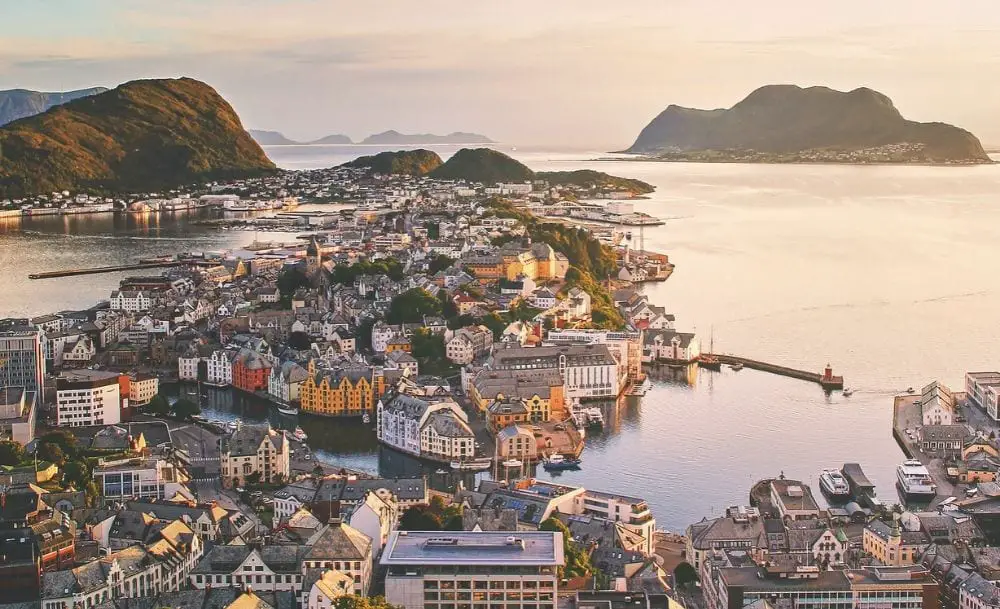

Norway 🇳🇴
Capital: Oslo
The languages spoken in Norway are Bokmål Norwegian & Nynorsk Norwegian (official), Sami and Finnish speaking minorities. (Sami is the official language across 9 municipalities.)
Norway is the birthplace of skiing. It is a country like no other. Locally known as Norge, it has maintained its position at the top of the Human Development Index list for over a decade now, which says a lot about how the country is run and what one can expect in this beautiful Scandinavian paradise.
It wasn’t just Murakami and the Beatles who were mesmerised by the Norwegian Woods, a famous product of the beguiling Arctic forests of Norway. Anyone who has visited Norway swears by the exotic beauty of its landscape. And how can anyone ignore the world-renowned Northern Lights of Norway, a sight that attracts thousands of tourists every year to this country?
Geopolitically too, Norway holds a special place in Europe. It is in Oslo that the Nobel Peace Prize is awarded each year, the only Nobel to be awarded outside Stockholm.
Norway first signed the Schengen agreement on 19 December 1996. A second agreement, that replaced the first, was then signed on 18 May 1999 after the incorporation of the Schengen agreement into EU law with the Treaty of Amsterdam. Norway started the implementation of the agreement on 25 March 2001.
Norway had 178,532 Schengen visa applications in 2019. This changed in 2020 when the applications fell to 20,985 during the pandemic.
Check out the Norway Visa Requirements and how to apply for a Schengen visa to Norway.
Poland 🇵🇱
Capital: Warsaw
Languages spoken in Poland include Polish (98%, official), Silesian (1.4%), etc.
Poland derives its name from the Polanie tribe, which literally means people living in open fields. Says something about the country, doesn’t it?
Poland, as a country, has survived for over a thousand years and it has the scars to show for it. One of the epicentres of the Second World War, the Polish capital of Warsaw was almost completely destroyed by German forces. As a reminder of those fateful years, you’ll find numerous synagogues and Holocaust memorials carefully preserved for anyone to appreciate and pay homage to.
Home to Europe’s heaviest animal (the European bison), the last ancient forest (Bialowieza Primeval Forest, the oldest continuously operating restaurant (Piwnica Świdnicka, which has been serving customers since circa. 1275) and the world’s largest castle (Malbork), Poland is a land of many opportunities. It is also the birthplace of Madam Curie, the first woman Nobel Prize winner and the only person in history to win the prize in two different disciplines.
Poland signed the Schengen agreement on 16 April 2003 and started implementing its provisions in late 2007. Since then, Poland has become the 7th most visited country in the Schengen zone.
Poland had 454,026 Schengen visa application submitted in 2019. In 2020, that number dropped to 103,743 as borders were closed. Poland was initially one of the first countries to prevent all travel to and from Poland unless you were a national or resident of the country.
Check out the Poland Visa Requirements and how to apply for a Schengen visa to Poland.
Portugal 🇵🇹
Capital: Lisbon
Portuguese is the official language of Portugal. Mirandese is also widely spoken.
Portugal has had the same national borders since CE 1139, making it the oldest country in Europe. It has a long history of exploration and conquest; in fact, Portugal established the first global colony stretching all the way from Africa to Asia. Its history is much older though; you can still find 20,000 years old stone carvings etched on the walls of Vila Nova de Foz Côa. It is evident that Portugal housed some of
A country with as rich a cultural legacy as Portugal is sure to arouse the interest of any traveller. But that’s not all that Spain has to offer, not by a long shot. Portugal’s unparalleled natural beauty is within an arm’s reach from its urban centres. Hiking across the Parque Nacional da Peneda-Geres, kayaking on the Rio Guadiana watching dolphins at the Sado Estuary are some of the highlights of the nature activities Portugal has on offer.
Portugal signed the Schengen agreement along with Spain, on 25 June 1991 and began implementing its provisions on 26 March 1995.
Although Portugal is one of the most popular places to visit in the world, Schengen visa applications were only 297,236 in 2019. As expected, this dropped to 56,613 applications in 2020 during the pandemic.
Check out the Portugal Visa Requirements and how to apply for a Schengen visa to Portugal.


Slovakia 🇸🇰
Capital: Bratislava
Slovakian languages Slovak is the most widely spoken language. Approximately 80% of the entire population speaks it. Other languages include Hungarian and Roma. The number of native Roma speakers is on the decline, however.
If you had only one word to describe Slovakia, it’d probably be ‘castles’. This tiny country has more chateaux and castles per capita than any other country in the world, most of which are included in UNESCO’s Cultural and Natural Heritage list.
Folklore plays an integral part in the lives of Slovaks, and they have built the first reservation of folk architecture in the village of Cicmany. Another place of interest that finds mention in most of the to-do lists is the ‘Centre of Europe’ near the village of Kremnicke Bane. For a small country, Slovakia sure has a lot to offer.
Slovakia signed the Schengen Agreement on 16 April 2003 and started the implementation of those provisions on 21 December 2007.
Slovakia had 25,202 Schengen visa applications in 2019. When the pandemic hit, it dropped to 4,319 applications submitted.
Check out the Slovakia Visa Requirements and how to apply for a Schengen visa to Slovakia.
Slovenia 🇸🇮
Capital: Ljubljana
The Slovenian languages are Slovenian and Serbo-Croatian.
Slovenians’ love for wine can be gauged from the fact that the oldest vineyard which still actively produces grapes is situated here. It’s not surprising that there is one vineyard in Slovenia for every 75 people.
If your sense of wanderlust is aroused after sipping the rich wine that Slovenia has to offer, you’d certainly not be disappointed. Slovenia has among the most jaw-dropping scenic view on offer. The Julian Alps in the north and the Postojna and Skocjan caves in the south, the long coastline of the Adriatic Sea and the innumerable green lakes, Slovenia has it all.
Slovenia signed the Schengen Agreement to join the Schengen Area on 16 April 2003. It then started the implementation process on 21 December 2007.
Slovenia had 27,722 Schengen visa applications in 2019. In 2020, that number fell to 4,414 visa applications submitted during the coronavirus pandemic.
Check out the Slovenia Visa Requirements and how to apply for a Schengen visa to Slovenia.
Spain 🇪🇸
Capital: Madrid
Spain has a few languages. Most people speak Castilian Spanish. However, Catalan is the official language in Catalonia, the Valencian Community and the Balearic Islands. In the Valencian Community, Catalan is known as Valencian. Also, Galician and Basque.
Get over La Liga and Madrid Open; Spain has much more to offer than two of the largest sporting events in the world.
Let’s take a different approach with Spain; let’s discuss it in numbers: Spain has 44 UNESCO world heritage sites, the third-highest in the world. So, history buffs shall feel right at home here. From the cave of Altamira to the monuments of Oviedo and Burgos Cathedral, immerse yourself in history as you walk through the relics of a bygone era.
Spain also has a 5,000-mile shoreline with some of the most iconic and recognisable beaches in Europe such as the Canary Islands and Balearic Island. Food and wine are an integral part of the Spanish culture and you will get a taste of it if you visit one of the numerous finely decorated restaurants here.
Speaking of Spanish culture, their love for art is well-documented and has produced some of the brightest gems in the art world in the form of Pablo Picasso, Salvador Dalí and Antoni Gaudí.
Spain is one of the most visited countries in Europe. It signed the Schengen agreement along with its neighbour, Portugal, on 25 June 1991 and began implementing its provisions on 26 March 1995.
Spain was the 4th most popular Schengen country where visa applications were submitted worldwide. There were 1,912,500 Schengen visa applications submitted to Spain in 2019. That number fell to 340,062 for the whole of 2020 during the pandemic.
Check out the Spain Visa Requirements and how to apply for a Schengen visa to Spain.
Sweden 🇸🇪
Capital: Stockholm
The main language spoken in Sweden is Swedish. Minorities also speak some Sami and Flemish.
Once you land in Stockholm or venture out to the rural setting, you may wonder whether you have landed in one of the stock Windows 10 wallpapers. Sweden’s love for form is a well-known secret and it manifests itself in the form of enticing cityscapes replete with brightly lit cafes, and sharply dressed people.
One of the most sparsely populated areas in Europe, Sweden offers its travellers a unique blend of natural curiosities. You can take off to the snow-capped mountains in a sleigh and experience Northern Lights first-hand or you can set up a tent on any of the numerous stunning beaches on the Baltic Sea. The choice rests upon you.
Sweden is more than just a visual treat though. It is one of the most innovative regions of the world, with the highest patents per capita. The Tetra pack that you sipped orange juice from this morning was invented by a Swedish. That’s one of their more modest inventions!
Sweden signed the Schengen agreement on 09 December 1996 and began implementing its provision on 25 March 2001.
Sweden had 275,239 Schengen visa applications submitted to it worldwide in 2019. In 2020, that dropped off to 36,136 visa applications due to the pandemic.
Check out the Sweden Visa Requirements and how to apply for a Schengen visa to Sweden.
Switzerland 🇨🇭
Capital: Bern
The languages spoken in Switzerland are German 65%, with French-speaking people constituting 18% of the population. 10% speak Italian.
Switzerland has given many firsts to the world- the first instant coffee (Nescafe), the first Nobel Peace Prize winner (Jean-Henri Dunanat), the first milk chocolate (invented by Henri Nestle and Daniel Peter), the first waterproof watch (a Rolex, no less!)- to name a few.
Switzerland’s alluring natural beauty is no secret. The lush green pastures give way to biking and hiking trails during winters. From glacial mountains to horizon-stretching tulip fields and thousands of glittering lakes, Switzerland is a nature lover’s paradise.
It’s not possible to talk about Switzerland and not mention chocolates. Switzerland is the leading producer, exporter as well as consumer of chocolates in the world. It’s quite fitting too, given the sweetness that Switzerland exudes.
Switzerland signed the Schengen agreement on 26 October 2004 and began implementing its provisions on 12 December 2008.
Switzerland had 611,598 Schengen visa applications submitted to their consulates, embassies and visa application centres worldwide in 2019. This then fell to 92,249 in 2020 as a result of travel restrictions in Europe.
Check out the Switzerland Visa Requirements and how to apply for a Schengen visa to Switzerland.
Furthermore, there are also three countries that are not part of the Schengen area but have open borders. These states are Monaco 🇲🇨, San Marino 🇸🇲 and Vatican City🇻🇦.
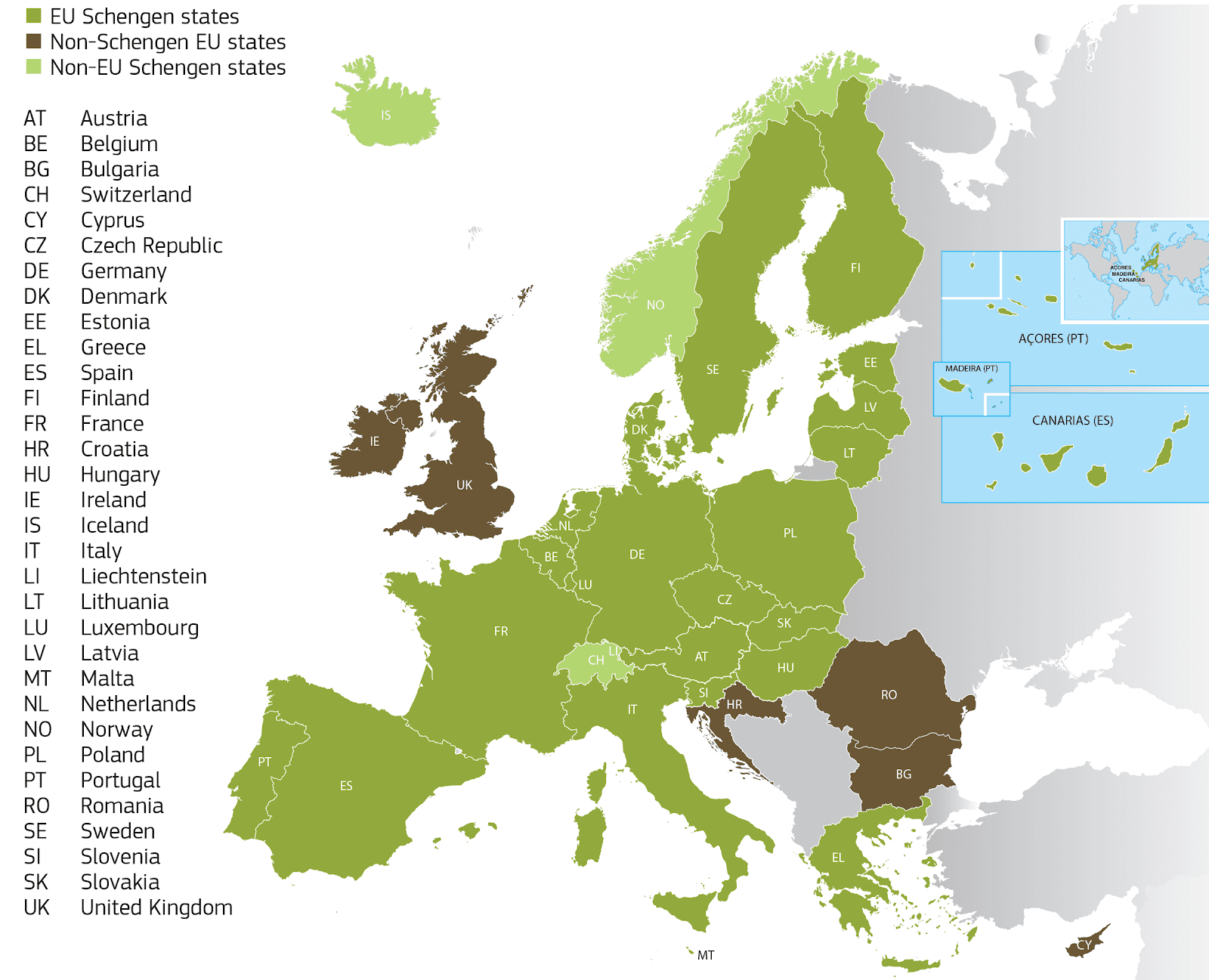

The Schengen territory now includes the majority of EU States besides Bulgaria 🇧🇬, Croatia 🇭🇷, Cyprus 🇨🇾, Ireland 🇮🇪, Romania 🇷🇴 (and prior to Brexit, the United Kingdom 🇬🇧). Romania is in the process of joining the Schengen Area but has not completed and talks are ongoing. Bulgaria was also ready to join Schengen, but have now temporarily backed away from its bid to join the Schengen Zone due to its fear of facing a migrant invasion. Ireland and the UK (when they were part of the EU) maintained an opt-out of the Schengen Agreement.
The makeup of the 27 Schengen countries is broken down into the 23 member countries that have signed and implemented the Schengen agreement as well as the four members of the European Free Trade Association (EFTA) through the Schengen Agreement. The EFTA countries are Iceland, Norway, Switzerland and Lichtenstein.
Although Monaco, San Marino, and Vatican City have opened their borders within the Schengen zone, they are not members of the Schengen visa-free zone. The other smaller states that are part of the Schengen zone are the Azores, Madeira, and the Canary Islands. They are considered as special members of the EU and part of the Schengen Zone despite the fact that they are located outside the European continent.
“As far as the Schengen area is concerned, I do not know if it is now convenient for Bulgaria to enter it. We fully use all that the Schengen area offers in the field of the fight against terrorism, (…) smuggling, drug trafficking (…). Yet we give back to Greece more than 150 people every day. If Alexander tells us ‘today you are joining the Schengen Zone’, many will arrive in Bulgaria tomorrow,” Borisov (Prime Minister of Bulgaria) said, expressing his concerns.
Borisov (Prime Minister of Bulgaria) said, expressing his concerns.
The Changing Schengen Area
Now the Schengen Agreement has implemented an interesting change to European travel rules and regulations. The whole Schengen Area concept revolves around the lack of border control, both domestically and continentally. But since 2015 a bulk of migrants has caused consequential conflict and friction within the EU, with some states under the Schengen area putting up borders and reimposing frontier controls. A lot of migrants are seeking to be allowed to settle in stable and financially strong countries like Germany and Sweden.
Germany took action to control migrants at borders with Austria and Denmark which were part of the passport-free Schengen area, after the refugee crisis of 2015 and continuing to control borders with several extensions to border controls since then. According to Senior Adviser at the Brussels-based think tank the ECP (European Policy Centre), Yves Pascouau:
“since September 2015, some countries have started using every legal possibility in the Schengen code to extend border controls,” and “This is unprecedented”
Yves Pascouau, Senior Adviser at the ECP


Coronavirus and the Schengen Area
Since the Coronavirus pandemic at the beginning of 2020, the growth of COVID-19 deaths in Italy, France, Spain and the growth and different approaches by various Schengen State’s reaction to coronavirus, the Schengen Members have unilaterally put up borders to travel through the Schengen zone.
This is obviously contradictory to the ethos and functioning of the Schengen Agreement but due to the Coronavirus pandemic, both the European Union and the various Schengen states have justified the implementation of border controls and checks, limited travel and the closing of all non-essential travel has become normal.
Currently, only Residents of member states and their citizens and family members can travel to the respective Schengen state. Additionally, emergency medical staff and government agency workers and food and delivery drivers are free to move through the Schengen States and Europe but still with border checks and the possibilities of quarantines being in place for travellers. For up to date information on travel restrictions, keep an eye on the coronavirus updates.
Save for the current COVID-19 pandemic, essentially, all of the countries within the Schengen Area let people travel between the relevant countries without having to present a passport, visa, or proof of identity every time they cross a border. The twenty-six member nations are not the only ones who allow the travellers to enter in with having a Schengen visa.
Non-European Countries That Accept Schengen Visas
On top of the current 27 member Schengen states, there are additional non-Schengen countries that allow travellers to enter their countries if you have a Schengen visa. There are currently 18 countries but depending on your nationality, there are more countries than the standard 18 non-Schengen Countries you can travel to on a Schengen visa.
- Albania 🇦🇱
- Antigua 🇦🇬
- Barbuda 🇦🇬
- Belarus 🇧🇾
- Bosnia 🇧🇦
- Bulgaria 🇧🇬
- Colombia 🇨🇴
- Cyprus 🇨🇾
- Georgia 🇬🇪
- Gibraltar 🇬🇮
- Herzegovina 🇧🇦
- Kosovo 🇽🇰
- Mexico 🇲🇽
- Montenegro 🇲🇪
- North Macedonia 🇲🇰
- Romania 🇷🇴
- Sao Tome and Principe 🇸🇹
- Serbia 🇷🇸
- Turkey 🇹🇷
Requirements to Join the Schengen States


An excess of countries beyond the twenty-six Schengen countries are required to carry and present a valid visa in order to travel to — and from — any and all Schengen nations. In total, citizens of precisely one hundred and five countries must have a visa in order to enter one of the Schengen territories.
Members of the Schengen countries are not required to carry passports or visas to travel to or around the Schengen countries. This presents real opportunities and benefits to countries and their citizens to enjoy free movement. Therefore, there is a real appetite for countries to join the Schengen States and benefit from Schengen provisions. Therefore, there is no shortage of countries trying to apply to join the Schengen Countries.
Applicant countries undergo a “Schengen evaluation” before joining the Schengen Area and periodically thereafter to ensure the correct application of Schengen legislation. To join the Schengen Area is not only a political decision, but there are also some rules and regulations which countries have to follow to fulfil the conditions. Such as:
- Controlling the external borders as the responsibility on behalf of other Schengen States
- Responsible for issuing uniform Schengen visas
- To maintain a high level of security after abolished border controls between Schengen Zone and efficient cooperation with law enforcement agencies in the other Schengen States
- Connect to and use the SIS (Schengen Information System)
- Adopt the common Schengen rules to control the land, air (airports), sea borders, police cooperation, issuing of visas and personal data protection.
Countries Trying to Join the Schengen Countries Zone
There are currently four countries that are still going through the process to be part of the Schengen Area:
Cyprus: Cyprus recently met the Schengen requirements for Personal Data Protection.


The Schengen Zone for UK After Brexit
The United Kingdom’s citizens have enjoyed free movement in Europe since the UK joined the EU in 1973, but now this freedom will end in 2021 after the Brexit transition period in 2020 comes to an end. However, British citizens will still be allowed to visit the Schengen zone for a short period of any 90 days within 180 days time period.
From 1st January 2021, UK citizens will need to pay to enter the Schengen area and complete the online ETIAS (European Travel Information and Authorisation System) application form before setting off. ETIAS is the new travel authorization system that will be required after 2020 for British citizens and other 60 nationalities who have been enjoying a visa-free visit to Europe. This ETIAS will save the travellers from the inconvenience of getting Schengen visas as it will be a visa waiver that is obtained online.
British citizens will have to apply online for an ETIAS visa waiver before departing. The ETIAS visa waiver will be valid for 3-years and will allow UK citizens unlimited entries into the region. This online visa procedure will take only a few minutes to apply and it will be different from other visa procedures. The UK and other 60 countries which are visa-exempt for Europe will remain visa-exempt even after 2020, but those countries will need an ETIAS visa waiver.


FAQs
Which countries are part of the Schengen Agreement?
Austria, Belgium, Czech Republic, Denmark, Estonia, Finland, France, Germany, Greece, Hungary, Iceland, Italy, Latvia, Liechtenstein, Lithuania, Luxembourg, Malta, Netherlands, Norway, Poland, Portugal, Slovakia, Slovenia, Spain, Sweden, Switzerland
Which non-European countries accept Schengen visas?
Albania, Antigua, Barbuda, Belarus, Bosnia, Bulgaria, Colombia, Cyprus, Georgia, Gibraltar, Herzegovina, Kosovo, Mexico, Montenegro, North Macedonia, Romania, Sao Tome and Principe, Serbia, Turkey
Is the UK part of the Schengen countries?
No. The UK is not part of the Schengen countries and you will need a UK visit visa to visit the UK for tourism, business or other purposes.
Can I use my Schengen visa to travel to other countries?
Yes. Other than Monaco, San Marino, and Vatican City, there are 18 standard countries you can visit with your Schengen visa. But depending on your nationality, this can increase substantially.
If I have a European residency permit or card, can I travel to any Schengen country with my current residency?
No. You will need to prove your nationality. But once in the Schengen zone, you will have the ability to travel within the Schengen countries with a redidence document issued by one of the Schengen countries.
How many countries can I travel on my Schengen visa?
You can travel to any of the 26 Schengen countries so long as you have a valid Schengen visa. You do not even need to leave the Schengen zone to visit any other Schengen state, so long as you are within your 90 days permitted.
We hope the above gives you enough information to start your Schengen visa application to the Schengen country of your choice. If you are still unsure about how to get a Schengen Visa? Start your Schengen visa application with IaM to get your Schengen Visa quickly and easily!
If this article helped you clarify your concerns about Schengen Visa, don’t forget to share and comment below about the Schengen country you intend to visit next!
- How to apply for an adult dependant relative visa to come to the UK - 22 March 2023
- India Has Strike Deals To Get Working Holiday Visas For Young Indian - 27 January 2023
- The Best European Cities To Move To In 2023 - 1 January 2023

